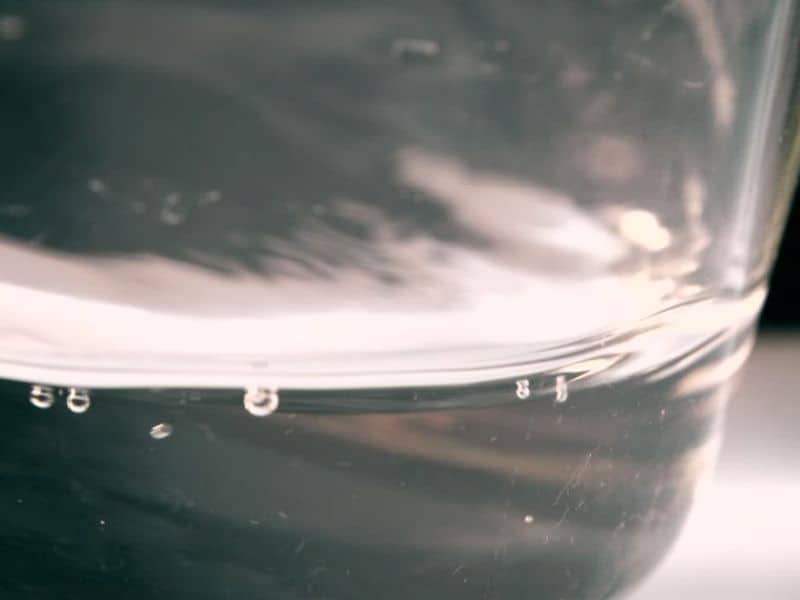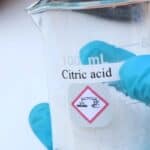Crafting the perfect bar of soap requires a balance of various ingredients, each contributing to the soap’s unique characteristics. Sodium lactate, a natural and versatile ingredient, plays a crucial role in enhancing the quality of your soap. In this article, we will explore how much sodium lactate should be used when making soap.
Use 1 teaspoon (about 5 grams) of sodium lactate per pound (454 grams) of oils for cold and hot process soaps, and 0.5 to 1 teaspoon (2.5 to 5 grams) per pound of melt and pour soap base. Adjust amounts based on desired hardness, lather, and texture.
When using sodium lactate in soap making, it’s essential to consider factors such as desired outcomes, ingredient compatibility, and safety concerns. As a versatile ingredient, sodium lactate can help you achieve the perfect balance of hardness and texture in your soaps.
Experiment with different dosages in small test batches to fine-tune your soap-making process. And if sodium lactate isn’t your preferred choice, explore alternatives like salt solutions, potassium lactate, glycerin, and sodium citrate to achieve similar results.
Let’s take a closer look at what else is involved with using sodium lactate when making soap.
Optimal Sodium Lactate Quantity for Soap Making
The appropriate amount of sodium lactate can make a significant difference in your soap’s quality.
For cold process and hot process soaps, add 1 teaspoon (about 5 grams) of sodium lactate per pound (454 grams) of oils in your recipe. This ratio ensures optimal hardening, making the soap more resistant to wear and tear.
For melt and pour soaps, use 0.5 to 1 teaspoon (2.5 to 5 grams) per pound (454 grams) of soap base. This addition helps improve the soap’s texture and durability. Adjust the amount within this range to achieve your desired hardness.
Adjusting the Dosage for Specific Desired Outcomes
You can modify the sodium lactate dosage to attain certain results. If you want a harder bar, consider increasing the amount by 0.25 to 0.5 teaspoon (1.25 to 2.5 grams) per pound of oils.
However, be cautious not to overdo it, as excessive sodium lactate can lead to brittle, crumbly soap.
To enhance lather and creaminess, experiment with different dosage adjustments in small test batches. Keep track of your results to identify the best balance for your specific soap recipe and desired characteristics.
Understanding Sodium Lactate for Soap Making
Sodium lactate, a sodium salt of lactic acid, is an odorless, colorless liquid commonly used in soap making. Derived from plant sources like corn or beets, it is a natural byproduct of fermentation.
Its primary function in soap making is to harden the bars, allowing them to maintain shape, resist wear, and last longer.
Incorporating sodium lactate into your soap recipe offers multiple advantages. It hardens the soap, resulting in a longer-lasting and more durable bar. This hardening property also speeds up the curing process, reducing the waiting time for your soap to be ready for use.
Additionally, sodium lactate enhances the soap’s texture, creating a smoother and creamier lather. This improvement makes for a more pleasant and luxurious bathing experience.
Sodium lactate also simplifies the unmolding process by preventing the soap from sticking to its mold. As a result, you can easily remove the soap without damaging its shape or design.
Factors Affecting Sodium Lactate Usage in Soap Making
Desired Effect and Application
The amount of sodium lactate used can significantly impact your soap’s final properties. Determine your desired characteristics, such as hardness, lather, and texture, before adjusting the dosage. If you want a harder bar, slightly increase the sodium lactate amount.
For a creamier lather, experiment with dosage adjustments in small test batches. Keep track of your results to find the perfect balance for your specific soap recipe and desired features.
Ingredient Compatibility
While sodium lactate is generally compatible with most soap ingredients, it’s essential to consider how it may interact with other additives.
Some fragrances, colorants, or exfoliants could affect the effectiveness of sodium lactate or require dosage adjustments.
Research each additive’s compatibility with sodium lactate, and conduct tests with your chosen ingredients to ensure a harmonious blend.
Safety Concerns
Using sodium lactate in soap making is typically safe when following recommended dosages.
However, exceeding the suggested amounts can lead to brittle, crumbly soap. Always wear appropriate protective gear, such as gloves and goggles, when handling sodium lactate and other soap-making ingredients.
In case of accidental skin or eye contact, rinse thoroughly with water and seek medical attention if irritation persists.
Tips for Proper Use of Sodium Lactate in Soap Making
Storage and Handling
Store sodium lactate in a cool, dry place away from direct sunlight and heat sources.
Keep it in a tightly sealed container, preferably made of glass or HDPE plastic, to prevent contamination and moisture exposure.
When handling sodium lactate, wear gloves and goggles to protect your skin and eyes from potential irritation or burns.
Mixing with Other Ingredients
To ensure even distribution throughout your soap, dissolve sodium lactate in a small amount of distilled water before adding it to your lye solution.
Incorporate the sodium lactate-water mixture into your soap batter after the lye solution and oils have cooled down to around 110°F (43°C).
This method helps prevent accelerating trace or causing a volcanic reaction in your soap.
Troubleshooting Common Issues
If you encounter problems like brittleness, insufficient lather, or difficulty unmolding, review the sodium lactate dosage and other ingredients in your recipe.
Adjust the amounts or substitute ingredients as needed to achieve your desired soap properties.
Keep detailed notes of your adjustments, observations, and outcomes to refine your soap-making process over time and create the perfect bar of soap.
Alternatives to Sodium Lactate in Soap Making
Other Natural and Synthetic Options
If you prefer not to use sodium lactate or have difficulty sourcing it, several alternatives can provide similar benefits in soap making.
Some common options include:
- Salt solution: Dissolve regular table salt (sodium chloride) in water and add it to your soap mixture. Use 1 teaspoon of salt per pound of oils in your recipe. Salt helps harden the soap and make it last longer.
- Potassium lactate: Derived from the potassium salt of lactic acid, potassium lactate is another natural option. It has similar properties to sodium lactate, offering hardness and improved texture. Use it at the same rate as sodium lactate.
- Glycerin: A natural byproduct of the soap-making process, glycerin is a humectant and can be added to your soap recipe to help retain moisture. However, it does not harden soap like sodium lactate. Add glycerin at a rate of 1-2% of your soap’s total weight.
- Sodium citrate: Produced by neutralizing citric acid with sodium hydroxide, sodium citrate can help harden soap and improve lather. Use 1-2% of your soap’s total weight for best results.
Pros and Cons of Alternatives
Each alternative to sodium lactate has its advantages and disadvantages. It’s essential to weigh these factors when deciding which option is best for your soap-making needs.
Salt solution:
Pros: Easy to find, inexpensive, helps harden soap
Cons: May not provide the same level of hardness as sodium lactate, could leave soap slightly grainy
Potassium lactate:
Pros: Similar properties to sodium lactate, natural and eco-friendly
Cons: Less common and may be more expensive than sodium lactate
Glycerin:
Pros: Natural byproduct, moisturizing, improves soap texture
Cons: Does not harden soap like sodium lactate, may make soap softer if used in excess
Sodium citrate:
Pros: Hardens soap, enhances lather, chelating agent (binds with metals to prevent soap scum)
Cons: Less common, may require additional preparation, potential pH changes in the soap
When choosing an alternative to sodium lactate, consider factors such as availability, cost, and the desired outcome for your soap.
Experiment with different options in small test batches to find the best solution for your specific needs.
Frequently Asked Questions
Potassium lactate has similar properties to sodium lactate but may be less common and more expensive.
Glycerin is a natural byproduct that moisturizes and improves soap texture but does not harden soap like sodium lactate.
Sodium citrate hardens soap, enhances lather, and acts as a chelating agent but may require additional preparation and cause potential pH changes.
Review the sodium lactate dosage and other ingredients in your recipe. Adjust the amounts or substitute ingredients as needed to achieve your desired soap properties.
Consider factors such as availability, cost, and desired outcome. Experiment with different options in small test batches to find the best solution for your specific needs.
Conclusion
In conclusion, sodium lactate is a valuable ingredient in soap making, contributing to hardness, improved texture, and ease of unmolding. By understanding its properties and proper usage, you can create high-quality, long-lasting soaps.
While alternatives like salt solutions, potassium lactate, glycerin, and sodium citrate offer varying benefits, each has its pros and cons.
Carefully consider your desired soap characteristics, ingredient compatibility, and safety concerns when selecting the best option for your needs. By experimenting with small test batches and keeping detailed notes, you can refine your soap-making process to achieve the perfect bar of soap.






